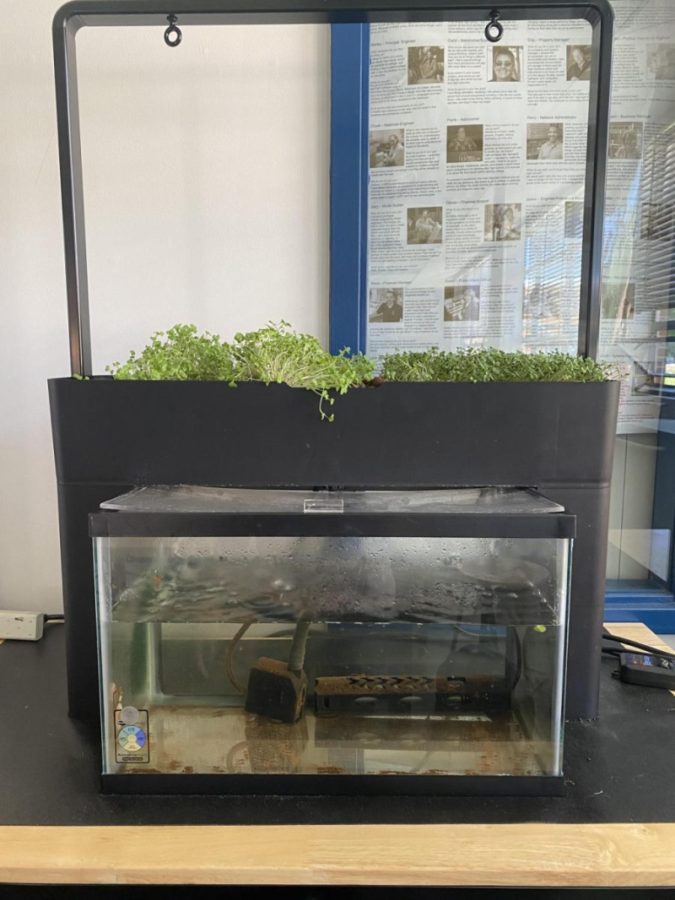Aquaponics Beta Test
Our group experience of conducting our Aquaponics Beta Test
How does Aquaponics Work?
Aquaponics is a system in which plants get food from fish. People usually need to clean fish tanks to take out fish poop. However, plants need ammonia, and fish poop has a substantial amount of ammonia. That’s why the water tank has a pump that takes water from the fish tank and toward the plants. The plants then take the ammonia, and the water goes back to the fish tank. Aquaponic systems have biofilters that are under the plants. These biofilters are what the water passes through, in order to get purified. After the plants “eat” the ammonia from the water, the water travels back to the tank, clean and ready for the fish.
Raising Cheeto (by Olivia)
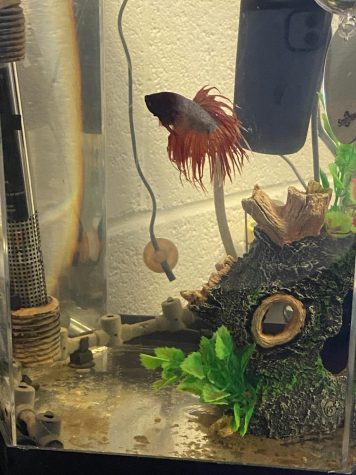 Having a fish to take care of during class was not only fun and exciting, but it was very educational. I felt a sense of responsibility to make sure that he was okay during every class, and to test the water to ensure the accurate levels for each chemical. I had to research what the correct water environment was for the fish, as well as how to achieve it. Recording the status of the tank gave me something to do in each class, and I learned so much from doing the project firsthand. Being able to care for a fish for school has made this semester very interesting, fun, and educational, and I’m so glad I had the opportunity to do this! I can’t begin to imagine what having an Eco-lab would do for future students, and I’m only disappointed I won’t be here to experience it.
Having a fish to take care of during class was not only fun and exciting, but it was very educational. I felt a sense of responsibility to make sure that he was okay during every class, and to test the water to ensure the accurate levels for each chemical. I had to research what the correct water environment was for the fish, as well as how to achieve it. Recording the status of the tank gave me something to do in each class, and I learned so much from doing the project firsthand. Being able to care for a fish for school has made this semester very interesting, fun, and educational, and I’m so glad I had the opportunity to do this! I can’t begin to imagine what having an Eco-lab would do for future students, and I’m only disappointed I won’t be here to experience it.
Plan for the Future
This year we researched and planned to build a simple aquaponics system that could fit easily in an Eco-lab set up outside of the building. But as you know, those plans were cut short due to a lack of time and assets. We plan on expanding our goal next year when we build the aquaponics system and Eco-lab. The Eco-lab will house the Tilapia needed to grow our lettuce and Micro grains in a vertical garden for our aquaponics system. It will also house a hydroponics system to grow tomatoes. We are confident that our plan will be fulfilled by the end of the first semester of next year.
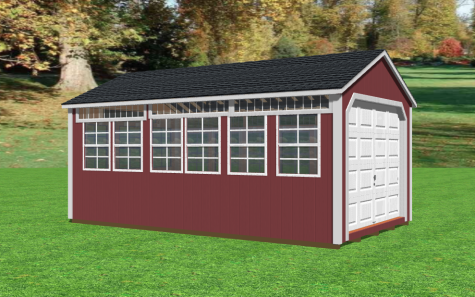

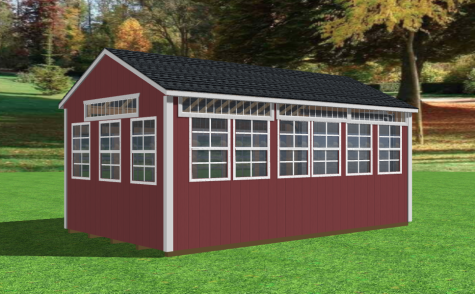
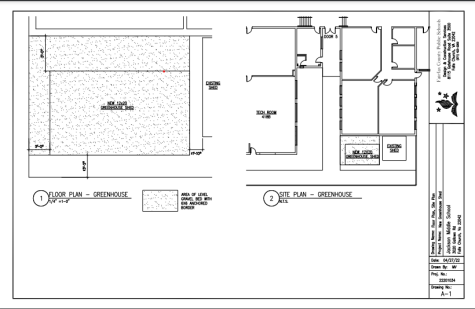
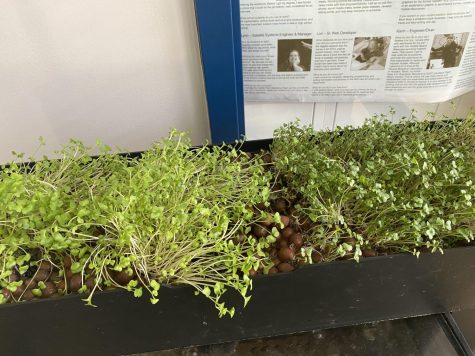 Our Research Experience
Our Research Experience
Every good project needs a lot of research, and this one was no different. Aquaponics is not very well known to most people, but there’s so much to learn from the subject. For the past three months, our group has tested our small-scale model for chemicals such as PH, nitrate, nitrite, and ammonia. These chemicals in the water tell us how well our system is working. After lots of failed trials, our system is starting to work, but how do we know our system is progressing? Something called a biofilter has been forming in the plant section of our tank. This biofilter filters the ammonia from the tank and gives it to the broccoli sprouts growing on top. The water is then pumped back into the tank, free of ammonia! We have been cycling without our beta fish, Cheeto. Every once in a while, we add ammonia to the tank and see how fast it goes away. The quicker the ammonia goes down, the better the biofilter is working. Even though we are wrapping up our year, our small-scale model is still in progress. The ultimate goal of our small-scale model is to get the biofilter working, put Cheeto back in the tank, and have the entire cycle work independently. This scale model that we are doing is growing broccoli sprouts. Every day that we enter our Engineering class we are grateful for the experience of conducting this experiment.
